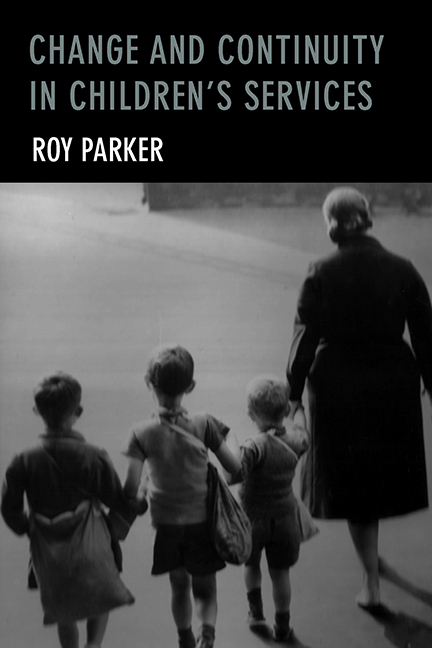Book contents
- Frontmatter
- Dedication
- Cover illustration
- Contents
- Acknowledgements
- Preface
- 1 Introduction: patterns of change and continuity
- 2 Residential child care: an historical perspective
- 3 From boarding-out to foster care
- 4 The evolution of landmark legislation
- 5 Getting started with the Children Act 1948: what do we learn?
- 6 Child care in the melting pot in the 1980s
- 7 Trends, transitions and tensions: children’s services since 101 the 1980s
- 8 Reflections on the assessment of outcomes in child care
- 9 The role and function of inquiries
- 10 Evidence, judgement, values and engagement
- 11 Emerging issues: looking ahead
- Notes and references
- Bibliography
- Index
10 - Evidence, judgement, values and engagement
Published online by Cambridge University Press: 07 March 2022
- Frontmatter
- Dedication
- Cover illustration
- Contents
- Acknowledgements
- Preface
- 1 Introduction: patterns of change and continuity
- 2 Residential child care: an historical perspective
- 3 From boarding-out to foster care
- 4 The evolution of landmark legislation
- 5 Getting started with the Children Act 1948: what do we learn?
- 6 Child care in the melting pot in the 1980s
- 7 Trends, transitions and tensions: children’s services since 101 the 1980s
- 8 Reflections on the assessment of outcomes in child care
- 9 The role and function of inquiries
- 10 Evidence, judgement, values and engagement
- 11 Emerging issues: looking ahead
- Notes and references
- Bibliography
- Index
Summary
Relevant and reliable research should inform both policy and practice. Nevertheless, the use of evidence remains decidedly patchy: serious obstacles remain that arise from the nature of the evidence at issue, from the unavoidable need for judgement, from the underlying values involved and, finally, from the vicissitudes of ‘political will’.
I Evidence
How confident should we be in what research concludes? Rather crudely one might begin by identifying three levels: evidence that is fairly conclusive, evidence that is indicative and evidence that is tentative. Of course, all kinds of scales can be used to make such distinctions. Quite simple devices could serve reasonably well. However, the problem is that the evidence is never complete. It is never wholly satisfactory; there are always deficiencies and there are always gaps.
Nonetheless, there is at least one test that can be applied: that of convergence. Do the results in question confirm the conclusions of other similar studies? Indeed, are there comparable studies against which they can be assessed? Furthermore, has this or that study been designed and reported in such a way that it could be replicated? If one looks back to Bowlby's influential report to the World Health Organisation on maternal deprivation in the early 1950s one sees that not only was he drawing upon his own research but upon other studies that went back to the 1920s. Most of that research pointed in the same direction as his, and that was partly the reason why his report made the impact that it did. My early research on foster care provides another example. One of the most important findings (as explained in Chapter 3) was that foster homes where there were ‘own’ children of about the same age as the placed child were significantly more likely than others to disrupt. Indeed, that one single factor – the presence or absence of own children around the same age – accounted for a large proportion of the variation between those placements that were successful and those that were not. Somewhat earlier, Trasler had arrived at a similar conclusion from his study, and many of those that followed produced the same finding.
- Type
- Chapter
- Information
- Change and Continuity in Children's Services , pp. 137 - 146Publisher: Bristol University PressPrint publication year: 2015



